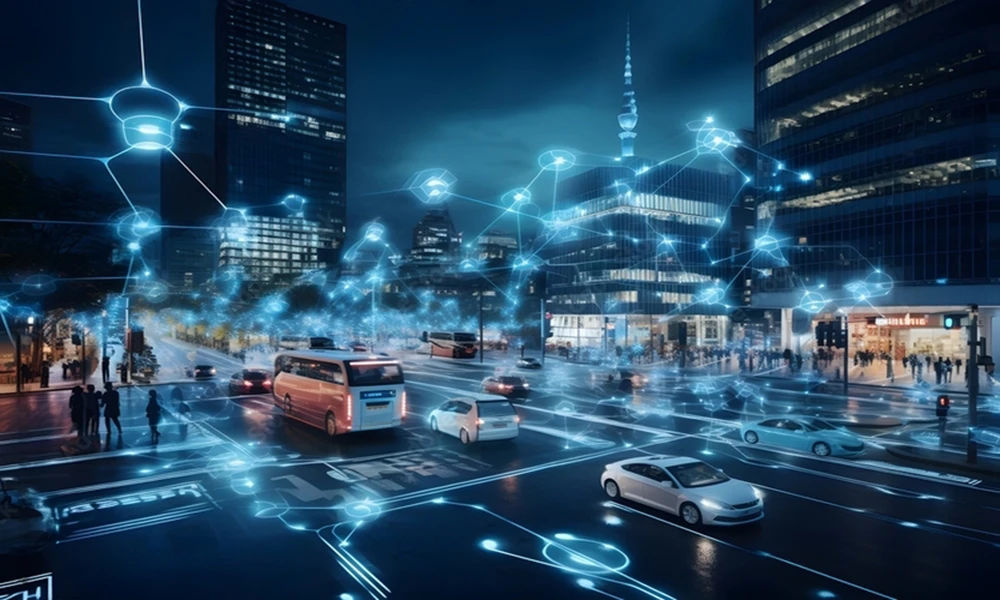Decoding Traffic: The Wonders of Traffic Data Collection
Category: Smart Road Technologies
As we navigate through busy streets and highways, there’s more happening than meets the eye. Enter Traffic Data Collection – the invisible choreographer that keeps our roads flowing smoothly. Let’s unravel the magic of how traffic data is collected, making our journeys safer and more efficient.
1. What is Traffic Data Collection?
- Traffic Data Collection is like having a backstage pass to the dance of vehicles on the road. It involves using smart technology to gather information about how cars, trucks, and even bicycles move and interact. This data is the key to understanding traffic patterns and making our journeys more predictable.
2. Counting Cars: The Role of Sensors
- Imagine tiny sensors by the roadside, counting every passing vehicle. That’s exactly what happens in Traffic Data Collection. Sensors, like eyes on the road, can be cameras, inductive loops in the pavement, or even radar systems. They count and track vehicles, giving us a snapshot of how busy the roads are.
3. Smart Traffic Signals: Keeping the Beat
- Have you ever wondered how traffic lights seem to know when to change? Traffic Data Collection plays a part here too. Smart traffic signals use data on the number of vehicles at an intersection to adjust signal timings. This helps traffic flow more smoothly and prevents unnecessary delays.
4. Travel Time Calculations: Predicting Journeys
- Ever used a navigation app that tells you how long it will take to reach your destination? Traffic Data Collection is behind those predictions. By analyzing the speed and movement of vehicles on different routes, it can estimate travel times, allowing us to plan our journeys more efficiently.
5. Traffic Reports: Your Roadside Weather Forecast
- Just like checking the weather before a trip, Traffic Data Collection provides real-time traffic reports. News outlets and navigation apps use this data to update us on road conditions, accidents, or congestion. It’s like having a virtual guide, keeping us informed and helping us choose the smoothest route.
Conclusion:
In conclusion, Traffic Data Collection is the silent maestro directing the symphony of vehicles on our roads. With sensors counting cars, smart signals keeping the beat, and travel time predictions helping us plan, it ensures our journeys are as smooth as possible. So, next time you breeze through green lights or check a traffic report, know that behind the scenes, Traffic Data Collection is at work, making every trip a well-coordinated dance of vehicles.
CASE STUDY
Case Study 1: Singapore’s Smart Nation Traffic Management
Introduction:
- Singapore, known for its smart city initiatives, has implemented a comprehensive Smart Nation Traffic Management system that heavily relies on Traffic Data Collection.
Implementation:
Integrated Traffic Sensors:
- Singapore has deployed an extensive network of sensors, including cameras and radar systems, across the city.
- These sensors collect real-time data on traffic flow, vehicle speeds, and congestion levels.
Dynamic Traffic Signal Control:
- The collected data is used to implement dynamic traffic signal control at intersections.
- Smart traffic signals adjust their timings based on current traffic conditions, optimizing the flow of vehicles and reducing congestion.
Outcome:
- Singapore’s Smart Nation Traffic Management system has significantly improved traffic efficiency and reduced congestion.
- By using Traffic Data Collection, the city can implement adaptive traffic management strategies, resulting in smoother traffic flow and reduced travel times.
Case Study 2: Los Angeles’ Automated Traffic Surveillance and Control System
Introduction:
- Los Angeles, USA, has implemented an Automated Traffic Surveillance and Control System to enhance traffic management and reduce congestion.
Implementation:
Traffic Cameras and Inductive Loop Sensors:
- Los Angeles employs a combination of traffic cameras and inductive loop sensors embedded in the pavement.
- Cameras provide visual insights, while inductive loops detect the presence of vehicles and monitor traffic volumes.
Real-Time Traffic Information:
- The collected data is processed in real-time to provide up-to-date information on traffic conditions.
- This information is shared with the public through electronic message signs and online platforms, allowing drivers to make informed decisions about their routes.
Outcome:
- The Automated Traffic Surveillance and Control System in Los Angeles has improved the overall efficiency of the city’s transportation network.
- By leveraging Traffic Data Collection technologies, the system provides real-time traffic updates, helping drivers navigate through the city more efficiently and reducing the impact of congestion.

